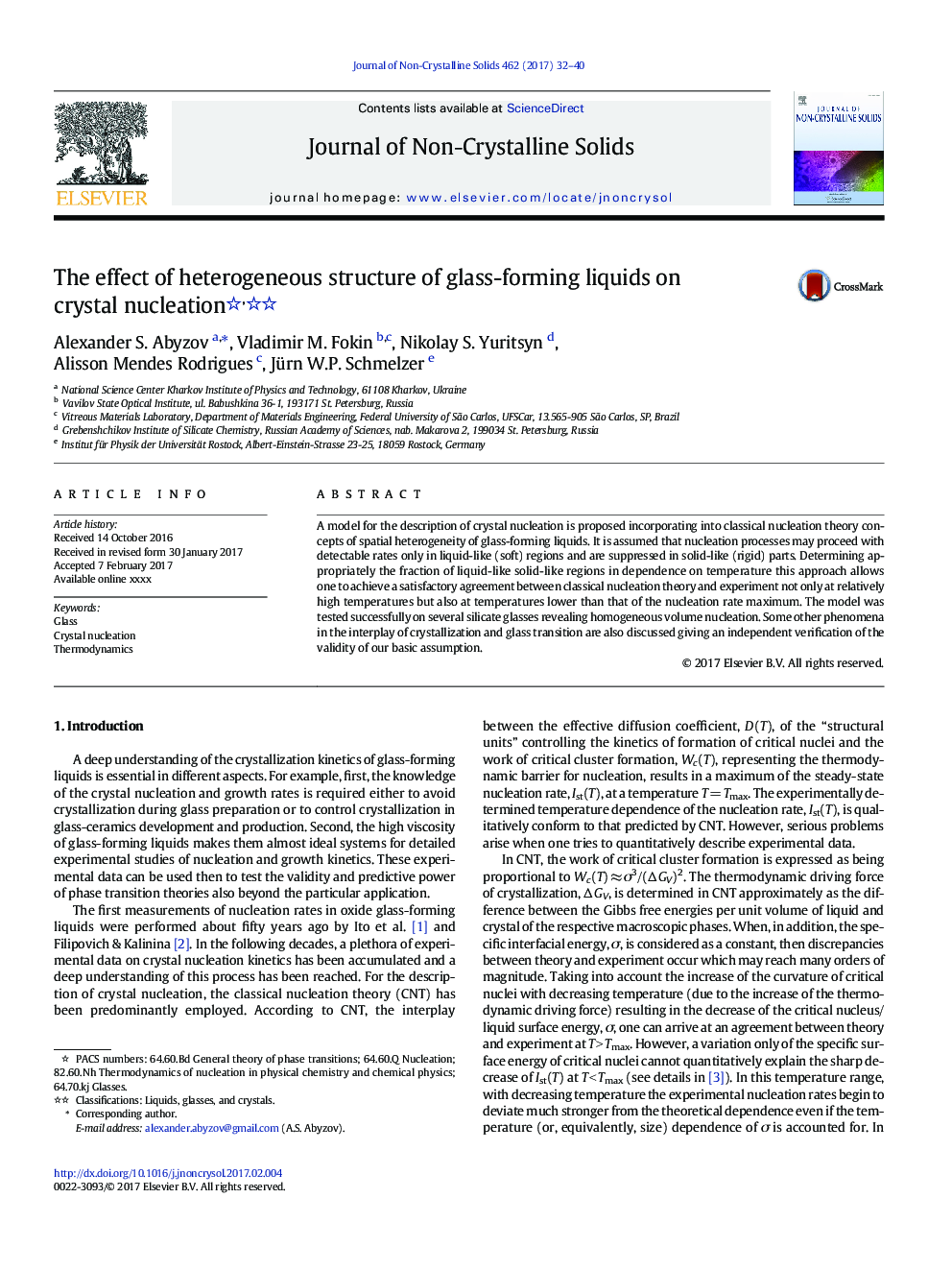| Article ID | Journal | Published Year | Pages | File Type |
|---|---|---|---|---|
| 5441288 | Journal of Non-Crystalline Solids | 2017 | 9 Pages |
Abstract
A model for the description of crystal nucleation is proposed incorporating into classical nucleation theory concepts of spatial heterogeneity of glass-forming liquids. It is assumed that nucleation processes may proceed with detectable rates only in liquid-like (soft) regions and are suppressed in solid-like (rigid) parts. Determining appropriately the fraction of liquid-like solid-like regions in dependence on temperature this approach allows one to achieve a satisfactory agreement between classical nucleation theory and experiment not only at relatively high temperatures but also at temperatures lower than that of the nucleation rate maximum. The model was tested successfully on several silicate glasses revealing homogeneous volume nucleation. Some other phenomena in the interplay of crystallization and glass transition are also discussed giving an independent verification of the validity of our basic assumption.
Related Topics
Physical Sciences and Engineering
Materials Science
Ceramics and Composites
Authors
Alexander S. Abyzov, Vladimir M. Fokin, Nikolay S. Yuritsyn, Alisson Mendes Rodrigues, Jürn W.P. Schmelzer,
